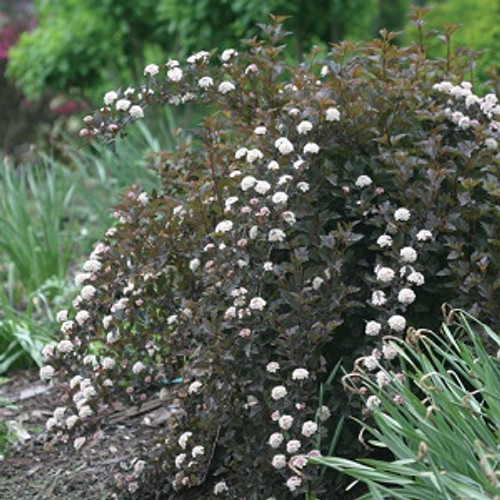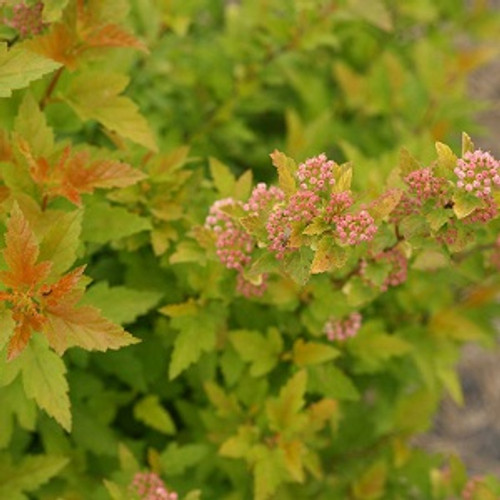| Physocarpus opulifolius 'SMNPOBLR' |
USDA Zone: 3-7 |
Ginger Wine® Ninebark is imbued with truly exceptional color: rich hues of orange red in spring and fall, and sparkling burgundy in summer. Large white flowers in late spring give way to bright red seed-heads. Sturdy stems and a compact upright habit make this an excellent plant in the container and the landscape.
Ginger Wine® Ninebark features showy clusters of white flowers at the ends of the branches from early to late spring, which emerge from distinctive pink flower buds. The flowers are excellent for cutting. It has attractive burgundy foliage which emerges orange in spring. The serrated lobed leaves are highly ornamental and turn an outstanding red in the fall. It features abundant showy red capsules from early to mid fall. The peeling tan bark and dark red branches add an interesting dimension to the landscape.
Top reasons to grow Ginger Wine® Ninebark:
- Colorful from spring through fall
- Attracts pollinators
- Very low maintenance: no pruning or deadheading required
Bloom Time: Spring, Summer
Common Name: Ninebark
|
Key Feature
|
Light Needs | Landscape Uses |
 |
 |
|
|
|
|
| More About Ginger Wine® Ninebark |
| Height: 5-6 ft |
Spread: 5-6 ft |
Flower Colour: White Shades |
|
Ginger Wine® Ninebark does best in full sun to partial shade. It is very adaptable to both dry and moist locations, and should do just fine under typical garden conditions. It is not particular as to soil type or pH. It is highly tolerant of urban pollution and will even thrive in inner city environments. Ginger Wine® Ninebark makes a fine choice for the outdoor landscape, but it is also well-suited for use in outdoor pots and containers. Because of its height, it is often used as a 'thriller' in the 'spiller-thriller-filler' container combination; plant it near the center of the pot, surrounded by smaller plants and those that spill over the edges. Note that when grown in a container, it may not perform exactly as indicated on the tag - this is to be expected. Also note that when growing plants in outdoor containers and baskets, they may require more frequent waterings than they would in the yard or garden. Be aware that in our climate, most plants cannot be expected to survive the winter if left in containers outdoors, and this plant is no exception. NOTE: Some flowers and plants may be harmful or poisonous to people or pets if touched or ingested. If you require more information before placing an order, please let us know in advance. |










